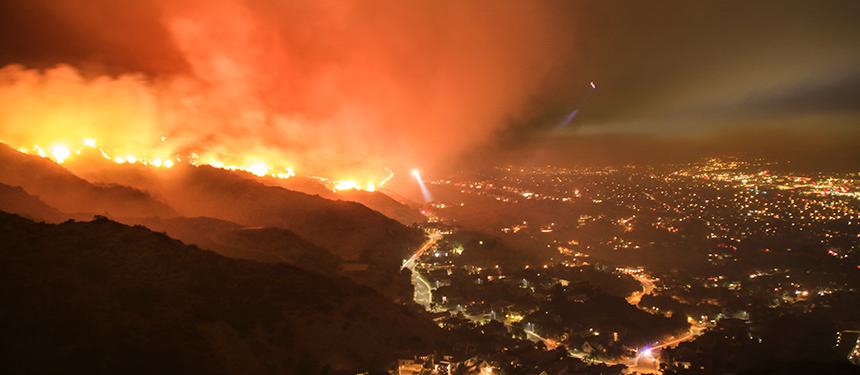What's happening: Wildfires in Los Angeles

Several major wildfires are currently burning in the Greater Los Angeles area as of 10 January, significantly increasing security and operational risks.
The first fires were recorded during the morning hours on 7 January and grew rapidly due to dry weather and strong winds. Fires have already burned almost 30,000 acres (121 km²), with five major fires burning as of 10 January. Of the two biggest fires, the Palisades Fire is affecting the Pacific Palisades neighbourhood of Los Angeles, Santa Monica and Eastern Malibu, and the Eaton Fire is affecting Altadena and Pasadena.
Municipal and state authorities issued states of emergency, which were followed by President Joe Biden's approval of a major disaster declaration to expedite federal assistance. At least 180,000 people are under evacuation orders, while another 200,000 residents are estimated to be under evacuation warnings. It’s estimated that at least 10,000 structures have been destroyed, with the exact number likely to be significantly higher.
The Los Angeles wildfires are likely to continue burning through at least 12 January ahead of a renewed intensification of the Santa Ana winds that fuel the initial fires on 7 January. While weather conditions improved on 9 January, briefly allowing an improved firefighting response, they are expected to deteriorate over the next 24-72 hours. Further evacuation orders will almost certainly be issued in the short term, impacting areas near ongoing fires as well as regions previously unimpacted by the fires due to the heightened likelihood of new wildfires breaking out. Despite the Los Angeles International Airport's (LAX) proximity to some of the fires, minimal flight disruption has been recorded thus far, a trend that is likely to continue over the coming days. The fires and associated smoke also pose health risks, with the Air Quality Index (AQI) being rated as unhealthy (fourth level on a six-tier system) for most of Los Angeles City.
For organisations, security, and risk managers, it's essential to conduct an assessment of the natural hazards specific to your location, as wildfire risks will remain significantly elevated over the coming days. Flexible work schedules should be considered for employees impacted by the ongoing evacuation orders. Proper clothing and protective gear should be emphasised for all staff, with special care given to vulnerable groups such as the elderly, infants, pregnant women, and those with pre-existing medical conditions. Monitor official directives, including evacuation orders, through the California Department of Forestry Fire (CAL FIRE). Use the National Weather Service's (NWS) channels to keep abreast of weather forecasting. Keep a 'grab bag' ready with essential supplies if located near the impacted areas.



